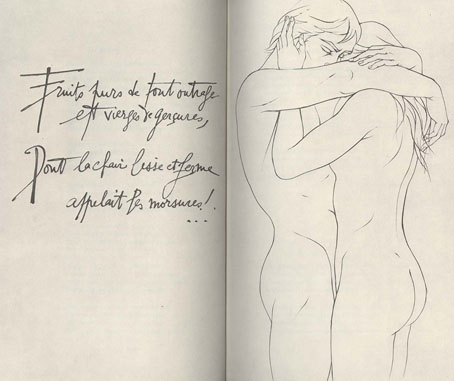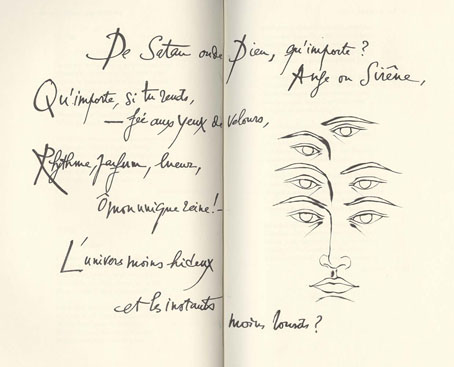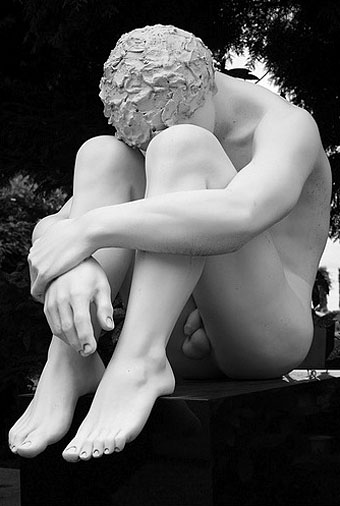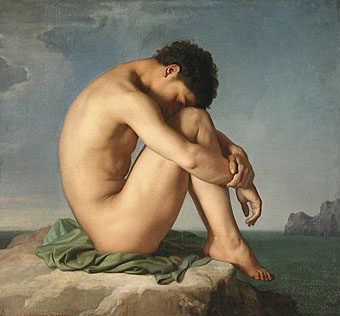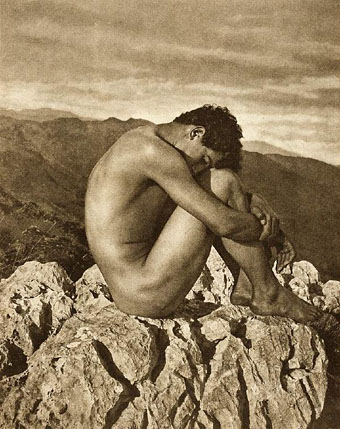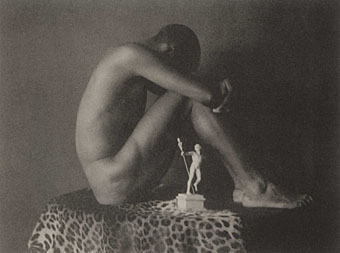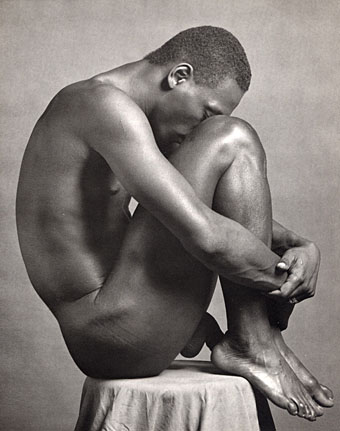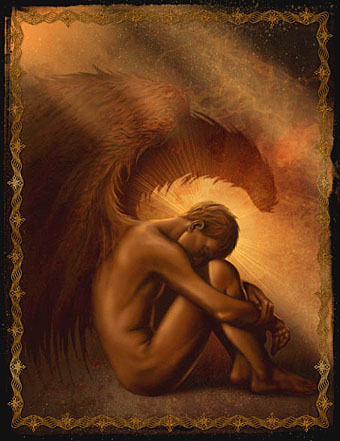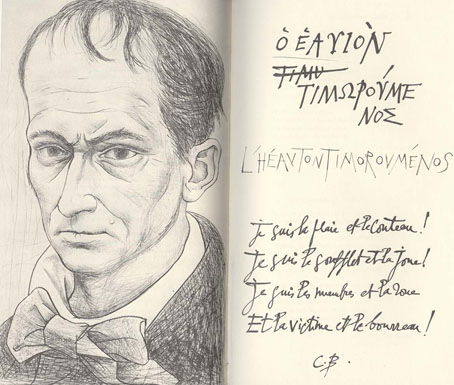
A couple of works by Pierre-Yves Trémois appeared in one of the very first posts here back in 2006 as part of the feature that began the long-running Recurrent Pose series. I like Tremois’s work a great deal so it’s good to find these pages from his 1971 edition of Baudelaire’s Les Fleurs du Mal. There were ten illustrations in all, some of them in the clear-line etching style familiar from his many prints. The Tremois edition is unusual in having some (all?) the poems written out by the artist. He’s also one of the few illustrators to do justice to Baudelaire’s scandalous lesbian verses by showing women who actually seem attracted to one another. Earlier illustrators—if they depicted the theme at all—were much more coy.
